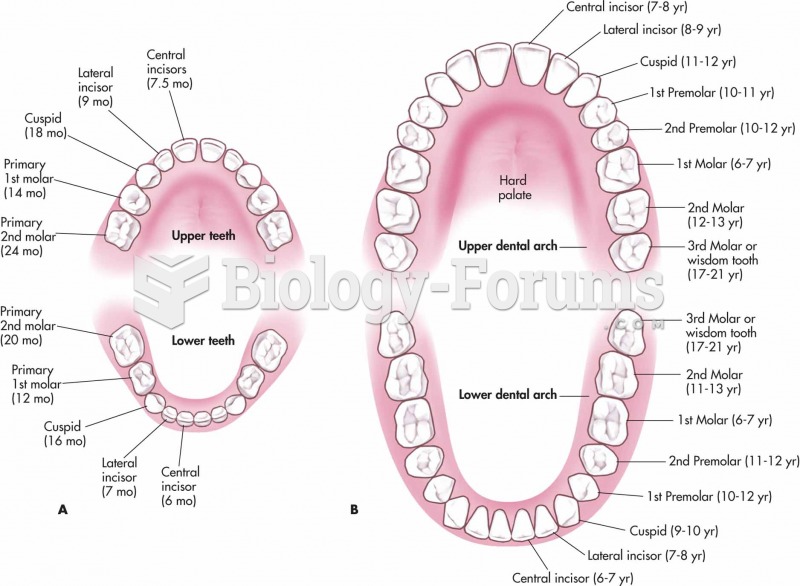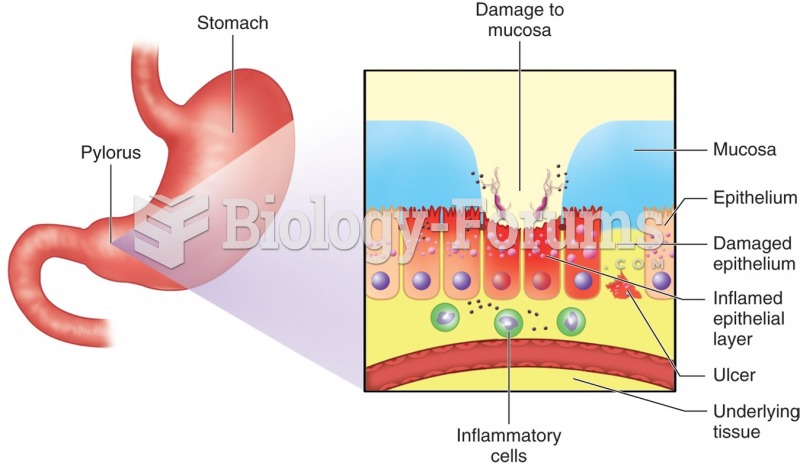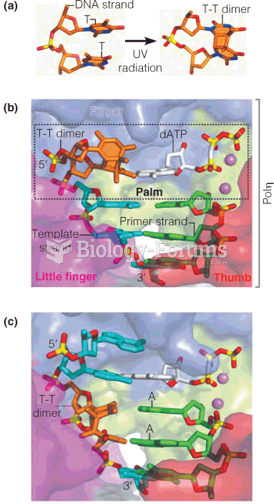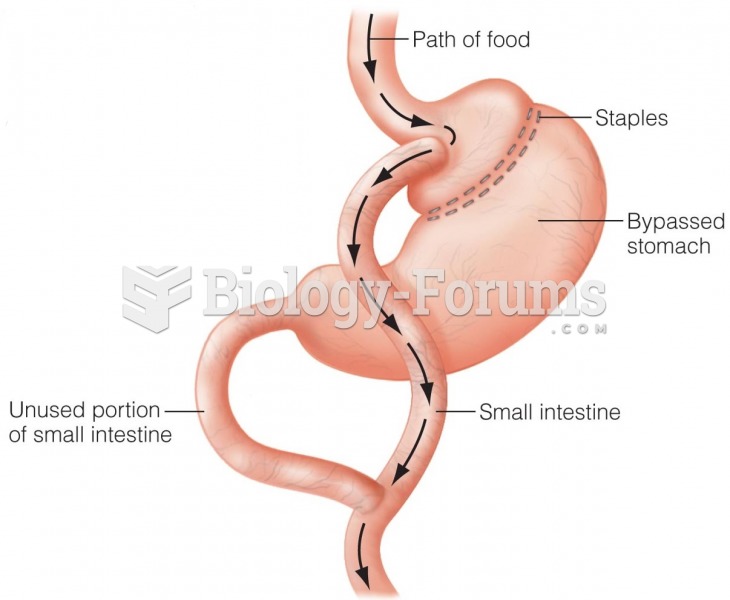Answer to Question 1
The surgery performed on Mr. McKinley was Roux-en-Y gastric bypass surgery, which is a restrictive-malabsorptive procedure. This type of procedure decreases the capacity of the stomach to hold food and fluid and also bypasses part of the stomach and small intestine (connecting the pouch formed from the stomach to the jejunum), further reducing nutrient absorption. This type of surgery is very commonly performed and, combined with adjustable gastric banding, accounts for 90 of all bariatric surgeries performed worldwide.
Nutritional risks include loss of lean body mass, malabsorption of micronutrients such as calcium and iron, and inadequate intake of all nutrients. Early satiety (due to the restrictive nature of the surgery) may limit food consumption and caloric intake. Additionally, due to the malabsorption issues, lactose intolerance, steatorrhea, and dumping syndrome are possible clinical consequences. These can possibly lead to malnutrition or to a specific nutrient deficiency.
Answer to Question 2
The metabolic alterations that occur as a result of sepsis and the systemic inflammatory response include changes in carbohydrate, protein, and lipid metabolism. First, in carbohydrate metabolism, the fight-or-flight response occurs when proinflammatory cytokines (IL-2, TNF, and interferon-y) and catabolic hormones (glucagon, catecholamines, and cortisol) are released. An increased need for glucose availability results in glycogenolysis and gluconeogenesis providing for the required glucose. The increase in glucose production, as well as insulin resistance, often results in hyperglycemia even if the patient has no history of diabetes. Glucose production is increased by an increased Cori cycle rate in the liver in response to the anaerobic conversion of glucose to lactate in the blood (marker for sepsis). The rate of the glucose-alanine cycle in the liver increases in order to increase the supply of glucose from the amino acid alanine in muscle. Finally, the glutamine cycle in the kidneys uses the amino acid glutamine from muscle tissue to make glucose. In order to accomplish this, the body switches to amino acids from lean body mass as the main source of energy. Protein breakdown accelerates while uptake of amino acids by the muscle declines. The liver increases its production of acute-phase proteins (CRP, fibrinogen) and this leads to a decrease in synthesis of other proteins, such as albumin and prealbumin (hepatic reprioritization). If no adaptation occurs, lethal depletion can occur. Alterations in lipid metabolism include an increase in lipolysis in response to the release of fight-or-flight hormones (epinephrine, norepinephrine, and glucagon). This increase in lipolysis impairs transportation within cells, causes an accumulation of lactate and pyruvate, and thus results in serum hyperlipidemia.







